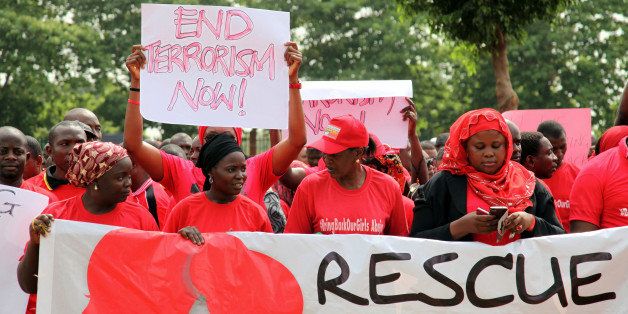
In the midst of the hunt for the missing schoolgirls in Northern Nigeria, news was soon breaking of another alleged attack by Boko Haram. This time they had appeared to strike the Lagos-Ibadan highway. This was all only a few weeks after the group claimed to carry out a bombing in the Nyanga Motor Park in Abuja. It would eventually transpire that this latest "attack" on the highway was in fact no more than a swirl of rumors, but the whole episode captures the fear and apprehension that is permeating Africa's most populous nation around what might be next for the militant sect, which has been wreaking havoc in the country since 2009.
On the surface, at least, Boko Haram is seemingly striking with increased frequency as well as displaying a renewed capacity to infiltrate and attack the nations capital in their quest to destabilize the country. All of this calls into question the Government line that they have been successful in suppressing the group and curtailing their activity to the more remote North Eastern parts of the country. Being able to effectively assess such questions in the past has been impeded by a lack of data -- especially in a country where both sides have often been engaged in a war of propaganda -- but an increasing amount of data that falls under the umbrella of Open Source Intelligence (OSINT) provides new opportunities for analysis. Using datasets such as the Armed Conflict Location Database, we can now robustly examine the patterns and trends of Boko Haram activity, and how the group may be evolving.
Figure 1: Incidents of violence against civilians perpetrated by Boko Haram over time: see here.
ACLED provides us with a comprehensive catalogue of political violence events updated on a monthly basis. Reviewing their data on Nigeria we can establish that with each passing year Boko Haram has been responsible for an increasing number of fatalities. While in 2011 they were involved events that led to an estimated 1,002 casualties, this number had jumped to over 4,500 by 2013 (it should be noted that on occasion some of these fatalities included Boko Haram members).
While it is true that Boko Haram attacks may have become more deadly we should note that has been a change in the spatial distribution of attacks. During 2012 the group was increasingly striking outside of their strongholds of the North East, including notable attacks in Kano, Kaduna as well in the Plateau states. Increasingly it seemed likely that the group would be able to pull off an attack in the country's economic heartbeat of Lagos. In response to the growing threat a state of emergency was declared in the northeastern states of Borno, Yobe and Adamawa. Figures 2 and 3 clearly demonstrate that the introduction of a state of emergency has been effective in restricting the scope of Boko Haram operations.
Figure 2. Boko Haram attacks in 2012: see here.
Figure 3. Boko Haram attacks after the introduction of a state of emergency in 2013 in Yobe, Borno and Adamawa: see here.
Furthermore the clampdown by the authorities has actually resulted in a change of tactics by Boko Haram. While 2012 saw them focus their efforts on government strongholds, such as military barracks and police stations, since the introduction of the state of emergencies targets have increasingly become civilian, where there is little or no security. This is clearly demonstrated when the ACLED data is mapped, with a clear shift from military engagements by the group to a focus on civilian targets.
Figure 4. Boko Harams' Changing Tactics: see here.
Figure 5. Boko Harams' Changing Tactics:see here.
Reviewing the data highlights that while Boko Haram still pose a serious threat to the stability of Nigeria, the group is being forced to change its tactics and areas of operations as the government steps ups its effort to disband the group. The alleged Boko Haram bombing in Abuja was clearly intended to send the message that the group still had the capacity to strike outside of the northeast, however, the data suggests that this may well be an anomaly or at least shows its too early to draw any conclusions on the renewed strength of Boko Haram. However, the fact that the group has shifted its focus to civilians highlights that any talk of government "success" in curtailing their operations should be seen as bitter sweet, as it is has arguably left the population more exposed. Future endeavors to stem the influence and impact of the group need to take into account the changing focus of Boko Haram attacks and concentrate on providing a coordinated response across the country for its whole population.